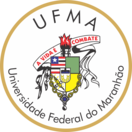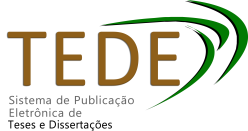| Compartilhamento |


|
Use este identificador para citar ou linkar para este item:
https://tedebc.ufma.br/jspui/handle/tede/4759Registro completo de metadados
| Campo DC | Valor | Idioma |
|---|---|---|
| dc.creator | RIBEIRO, Diego Luiz Dos Santos | - |
| dc.creator.Lattes | http://lattes.cnpq.br/9697727200577929 | por |
| dc.contributor.advisor1 | TORRES JUNIOR, José Ribamar de Souza | - |
| dc.contributor.advisor1Lattes | http://lattes.cnpq.br/7462697632109147 | por |
| dc.contributor.referee1 | TORRES JUNIOR, José Ribamar de Souza | - |
| dc.contributor.referee1Lattes | http://lattes.cnpq.br/7462697632109147 | por |
| dc.contributor.referee2 | SILVA, Ana Lúcia Abreu | - |
| dc.contributor.referee2Lattes | http://lattes.cnpq.br/8288733951324759 | por |
| dc.contributor.referee3 | CARVALHO NETA, Raimunda Nonata Fortes | - |
| dc.contributor.referee3Lattes | http://lattes.cnpq.br/9142178397070079 | por |
| dc.contributor.referee4 | BEZERRA, Nancyleni Pinto Chaves | - |
| dc.contributor.referee4Lattes | http://lattes.cnpq.br/7603276259449956 | por |
| dc.contributor.referee5 | SOUSA, Joicy Cortez de Sá | - |
| dc.contributor.referee5Lattes | http://lattes.cnpq.br/2368453114845145 | por |
| dc.date.accessioned | 2023-06-07T13:28:41Z | - |
| dc.date.issued | 2022-08-25 | - |
| dc.identifier.citation | RIBEIRO, Diego Luiz Dos Santos. Biologia reprodutiva e expressão gênica gonadal em Genyatremus luteus (BLOCH, 1790) - (Teleostei, Perciformes: Haemulidae). 2022. 102 f. Tese (Programa de Pós-Graduação em Rede - Rede de Biodiversidade e Biotecnologia da Amazônia Legal/CCBS) - Universidade Federal do Maranhão, São Luís, 2022. | por |
| dc.identifier.uri | https://tedebc.ufma.br/jspui/handle/tede/4759 | - |
| dc.description.resumo | Genyatremus luteus, conhecido popularmente como peixe-pedra, é uma espécie estuarino- marinha, de habitat preferencialmente costeiro, vivendo especialmente em estuários e lagunas. Essa espécie tem grande potencial para a exploração pesqueira extrativista no estado do Maranhão. Porém, pouco se sabe sobre a biologia reprodutiva nessa espécie. Desta forma, objetivou-se com o trabalho avaliar a biologia reprodutiva e expressão gênica gonadal em G. luteus na Ilha do Maranhão. Foram utilizados 21 exemplares machos e 28 fêmeas. De acordo com as caraterísticas histológicas dos testículos observada na análise histológica, os machos foram agrupados em três estádios reprodutivos: imaturos (n=7), em maturação (n=7) e maduros (n=7) e asfêmeas, por sua vez, com base nas características histológicas dos folículos ovarianos e no desenvolvimento do oócito foram também classificadas: imaturas (n=7), em maturação (n=7), maduro (n=7) e desovado (n=7). Os níveis plasmáticos dos hormônios E2, 11-KT e 17α- OHP foram medidos por meio de ensaio imunoenzimático (ELISA). A expressão gênica dos receptores de estrogênio (er) e LH (lhr) foi analisada por PCR em tempo real. Nos machos, a concentração plasmática de 11-KT apresentou um pico na fase de maturação final. As maiores concentrações plasmáticas de 17α-OHP foram encontradas no estádio imaturo, as quais diminuiram nos estágios subsequentes. Por outro lado, o 17β-estradiol (E2) apresentou maior concentração no estádio em maturação. A expressão de er aumentou significativamente ao longo do desenvolvimento maturacional dos testículos. O mRNA para o receptor de LH diminuiu do estádio imaturo para o estádio em maturação com consequente pico de expressão no estádio maduro. Houve alta correlação entre a expressão gênica dos receptores e os níveis de esteróides plasmáticos, especialmente com E2. Nas fêmeas, a maior concentração plasmática de E2 foi encontrada em espécimes maduros. As concentrações plasmáticas de 17α-OHP aumentaram significativamente desde o estágio imaturo até o estágio final de maturação ovariano. O estágio reprodutivo maturacional não teve nenhum efeito nas concentrações plasmáticas de 11-KT. A expressão de er nos ovários aumentou significativamente ao longo da maturação ovariana e permaneceu alta nos estágios de maturação e desova. A expressão de lhr apresentou tendência semelhante ao longo do processo de maturação, embora tenha atingido seu pico na fase de desova. Em conclusão, este estudo caracterizou pela primeira vez, sob os aspectos celular, endócrino e molecular, os diferentes estádios de maturação reprodutiva em machos e fêmeas de G. luteus, demonstrando que o perfil da expressão gênica para osreceptores er e lhr, bem como as concentrações plasmáticas de 11-KT e E2 foram diretamente relacionados à maturação testicular e ovariana, apesar de não se relacionarem necessariamente com o índice gonadossomático. | por |
| dc.description.abstract | Genyatremus luteus, popularly known as stonefish, is an estuarine-marine species with a preferentially coastal habitat, living especially in estuaries and lagoons. This species has great potential for extractive fisheries in the state of Maranhão. However, little is known about the reproductive biology of this species. Thus, the objective of this work was to evaluate the reproductive biology and gonadal gene expression in G. luteus on the island of Maranhão. 21 male and 28 female specimens were used. According to the histological characteristics of the testes observed in the histological analysis, males were grouped into three reproductive stages: immature (n=7), maturing (n=7) and mature (n=7) and females, in turn, based on the histological characteristics of the ovarian follicles and the development of the oocyte were also classified: immature (n=7), maturing (n=7), mature (n=7) and spawned (n=7). Plasma levels of hormones E2, 11-KT and 17α-OHP were measured by enzyme immunoassay (ELISA). Estrogen (er) and LH (lhr) receptor gene expression was analyzed by real-time PCR. In males, the plasma concentration of 11-KT showed a peak in the final maturation phase. The highest plasma concentrations of 17α-OHP were found in the immature stage, which decreased in the subsequent stages. On the other hand, 17β-estradiol (E2) showed higher concentration in the maturation stage. The expression of er significantly increased along the maturational development of the testes. The mRNA for the LH receptor decreased from the immature stage to the maturation stage with a consequent peak of expression in the mature stage. There was a high correlation between receptor gene expression and plasma steroid levels, especially with E2. In females, the highest plasma concentration of E2 was found in mature specimens. Plasma concentrations of 17α-OHP increased significantly from the immature stage to the final stage of ovarian maturation. The maturational reproductive stage had no effect on plasma 11-KT concentrations. The expression of er in the ovaries significantly increased throughout ovarian maturation and remained high in the maturation and spawning stages. The expression of lhr showed a similar trend throughout the maturation process, although it reached its peak in the spawning phase. In conclusion, this study characterized for the first time, under the cellular, endocrine and molecular aspects, the different stages of reproductive maturation in males and females of G. luteus, demonstrating that the gene expression profile for er and lhr receptors, as well as plasma concentrations of 11-KT and E2 were directly related to testicular and ovarian maturation, although not necessarily related to the gonadosomatic index. | eng |
| dc.description.provenance | Submitted by Jonathan Sousa de Almeida (jonathan.sousa@ufma.br) on 2023-06-07T13:28:41Z No. of bitstreams: 1 DIEGOLUIZDOSSANTOSRIBEIRO.pdf: 2101961 bytes, checksum: dafce2a658a4b64f1c04fe0d090fa331 (MD5) | eng |
| dc.description.provenance | Made available in DSpace on 2023-06-07T13:28:41Z (GMT). No. of bitstreams: 1 DIEGOLUIZDOSSANTOSRIBEIRO.pdf: 2101961 bytes, checksum: dafce2a658a4b64f1c04fe0d090fa331 (MD5) Previous issue date: 2022-08-25 | eng |
| dc.description.sponsorship | FAPEMA | por |
| dc.format | application/pdf | * |
| dc.language | por | por |
| dc.publisher | Universidade Federal do Maranhão | por |
| dc.publisher.department | DEPARTAMENTO DE OCEANOGRAFIA E LIMNOLOGIA/CCBS | por |
| dc.publisher.country | Brasil | por |
| dc.publisher.initials | UFMA | por |
| dc.publisher.program | PROGRAMA DE PÓS-GRADUAÇÃO EM REDE - REDE DE BIODIVERSIDADE E BIOTECNOLOGIA DA AMAZÔNIA LEGAL/CCBS | por |
| dc.rights | Acesso Aberto | por |
| dc.subject | roncador; | por |
| dc.subject | receptor de gonadotrofinas | por |
| dc.subject | estradiol; | por |
| dc.subject | gônadas; | por |
| dc.subject | reprodução. | por |
| dc.subject | grunts; | eng |
| dc.subject | gonadotropin receptor; | eng |
| dc.subject | estradiol; | eng |
| dc.subject | gonads; | eng |
| dc.subject | reproduction. | eng |
| dc.subject.cnpq | Reprodução Animal | por |
| dc.subject.cnpq | Engenharia de Pesca | por |
| dc.title | Biologia reprodutiva e expressão gênica gonadal em Genyatremus luteus (BLOCH, 1790) - (Teleostei, Perciformes: Haemulidae) | por |
| dc.title.alternative | Reproductive biology and gonadal gene expression in Genyatremus luteus (BLOCH, 1790) - (Teleostei, Perciformes: Haemulidae) | eng |
| dc.type | Tese | por |
| Aparece nas coleções: | TESE DE DOUTORADO - PROGRAMA DE PÓS-GRADUAÇÃO EM REDE - REDE DE BIODIVERSIDADE E BIOTECNOLOGIA DA AMAZÔNIA LEGAL/CCBS | |
Arquivos associados a este item:
| Arquivo | Descrição | Tamanho | Formato | |
|---|---|---|---|---|
| DIEGOLUIZDOSSANTOSRIBEIRO.pdf | Tese de Doutorado | 2,05 MB | Adobe PDF | Baixar/Abrir Pré-Visualizar |
Os itens no repositório estão protegidos por copyright, com todos os direitos reservados, salvo quando é indicado o contrário.




